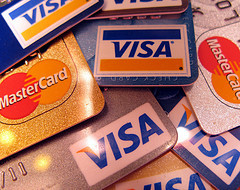Are Prepaid Cards Improving Or Are They Still A Confusing Mess Of Hidden Fees?
First, the good news: Our wiser, elder siblings at Consumer Reports have ranked the best and worst prepaid cards for the very first time, and it seems many cards have lower fees and act a lot like traditional bank accounts. But now for the bad news: Fee information can still be tricky to find and many cards don’t come with the guarantees you can get with a regular debit card.
In other words, prepaid cards have a long way to go but it does seem like things are improving. Consumer Reports notes that this is just in time, as it’s becoming more and more popular in the payments industry to use prepaid cards: In 2012, they were used 1.6 billion times, stacking up for a total of $77 billion in transactions.
Along with that growth, the Consumer Financial Protection Bureau is on the move as well, and has been considering new rules that would protect the consumers who rely on prepaid cards. There’s still a long way to go, however.
“Not all prepaid cards are created equal,” said Michelle Jun, senior attorney with Consumers Union. “The good news is that prepaid card fees have come down and a number of cards offer many of the same features you get with a bank account. But consumers can still end up paying more than they bargain for because fees are often poorly disclosed and can pile up quickly.”
Consumer Reports investigated 26 different prepaid cards and looked at four factors: value (how much they cost to use); convenience (availability of in-network ATMs, bill pay features, and how widely the card network brand is accepted); safety (whether funds are protected with FDIC deposit insurance); and how well fees are disclosed.
THE GOOD
Shining stars in investigation did well in all of the categories, with fewer fees that were easily avoidable. They also provided FDIC insurance for cardholders and worked a lot like traditional checking accounts. The top five include: the Bluebird card with direct deposit, H&R Block Emerald Card, Green Dot Bank Issued Prepaid card, Approved card with direct deposit, and the Approved Card without direct deposit.
THE BAD
And then there are those that fell short in at least one if not more categories — the ones consumers should avoid unless you like high fees you can’t dodge, or have fun trying to figure out and understand those fees. Among the worst scorers: the Account Now Prepaid Gold Visa (Meta Bank), The REACH Card from Tom Joyner, Redpack Mi Promesa Prepaid MasterCard, and the American Express for Target prepaid card.
If you’re interested in prepaid cards, check out the fees you’ll be charged beforehand and make sure it’s the best fit for your needs. Don’t use the cards to buy gas or pay for hotels and rental cars, because often those places will put a hold on the card that could hamstring your budget until they clear.
Check out Consumer Tips for Using Prepaid Cards here for more advice on how to use prepaid cards.
What you need to know about prepaid cards [Consumer Reports]
Want more consumer news? Visit our parent organization, Consumer Reports, for the latest on scams, recalls, and other consumer issues.


